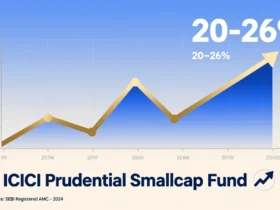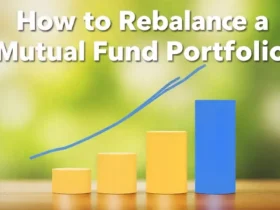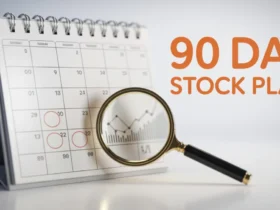Picture this: You’ve carefully built your mutual fund portfolio, picking funds that match your financial dreams and how much risk you’re willing to take. Everything’s set—until the market starts doing its dance. Stocks might soar, bonds might dip, and suddenly, your portfolio looks nothing like the plan you started with. It’s drifted off course, and now you’re wondering, “How do I get it back on track?” That’s where rebalancing comes in.
Table of Contents
What Is Rebalancing, and Why Should You Care?
At its heart, rebalancing is about keeping your mutual fund portfolio in line with your intentions. When you first set it up, you likely chose a mix of funds—say, stock funds for growth and bond funds for stability—that reflects your risk tolerance and goals. Maybe you went for 60% stocks and 40% bonds, thinking it’s the perfect balance for your 10-year plan.
But markets don’t sit still. If stocks have a great year, that 60% might creep up to 70%, making your portfolio riskier than you’d like. Or if bonds shine, you might end up too conservative, missing out on growth. Rebalancing is the fix—it’s how you bring things back to your target allocation.
Why Rebalancing Matters
- Keeps Risk in Check: Your original allocation was based on how much risk you’re okay with. Rebalancing ensures you don’t end up too exposed—or too cautious.
- Buys Low, Sells High: When you rebalance, you sell what’s gone up and buy what’s lagged. It’s a disciplined way to follow that classic investing wisdom.
- Stays True to Your Goals: Whether you’re saving for retirement, a house, or your kid’s college, rebalancing keeps your portfolio working toward what matters to you.
As Vanguard founder John Bogle once said, “The most important thing about an investment philosophy is that you have one.” Rebalancing is how you stick to yours.

When Should You Rebalance?
Timing is everything, right? Well, when it comes to rebalancing, there’s no one-size-fits-all answer. You’ve got two main approaches to choose from: time-based and threshold-based. Let’s break them down.
Time-Based Rebalancing
This is the “set it and check it” method. You pick a schedule—say, every year or every six months—and rebalance no matter what. It’s simple, predictable, and perfect if you like routine.
- Pros: Easy to plan, keeps you consistent.
- Cons: You might rebalance when it’s not really needed, or miss big market shifts between check-ins.
Threshold-Based Rebalancing
Here, you watch your portfolio and act when an asset class drifts too far—like 5% or 10%—from your target. It’s more hands-on but adapts to what the market’s doing.
- Pros: Responds to changes, might save you from unnecessary trades.
- Cons: Needs more attention, could mean trading more often in choppy markets.
A Quick Comparison
| Rebalancing Method | Pros | Cons |
|---|---|---|
| Time-Based | – Simple and predictable | – Might miss market shifts |
| – Easy to stick to | – Could rebalance unnecessarily | |
| Threshold-Based | – Adapts to market moves | – More effort to monitor |
| – Potentially more efficient | – Risk of over-trading |
Some folks mix both—checking yearly but only acting if things are off by, say, 5%. What’s best for you? It depends on how much you want to babysit your portfolio and how big it is. For most, an annual check with a 5% threshold works like a charm.
How to Rebalance Your Mutual Fund Portfolio: A Step-by-Step Guide
Rebalancing might sound tricky, but it’s really just a series of clear steps. Grab a coffee, and let’s walk through it together.
Step 1: Define Your Target Allocation
This is your blueprint. Decide what mix of stocks, bonds, or other assets fits your goals and risk comfort. Not sure where to start? A common split for a balanced investor might be 60% stocks and 40% bonds. Younger folks might lean heavier on stocks (70/30), while those nearing retirement might go safer (50/50). If you’re stuck, online calculators or a chat with a financial advisor can help.
Step 2: Check Your Current Allocation
Log into your investment account or use a tool like Personal Capital. See what percentage each fund takes up now. Maybe your stock fund’s grown, and your bond fund’s lagged—write down the numbers.
Step 3: Spot the Gaps
Compare your current setup to your target. Are stocks at 65% when you want 60%? Are bonds at 35% instead of 40%? Figure out how far off you are for each piece.
Step 4: Plan Your Moves
Here’s where you decide how to fix it. You’ve got options:
- New Money: If you’re adding cash regularly (like from your paycheck), pour it into the underweighted funds—like bonds if they’re low.
- Sell and Buy: No new cash? Sell some of the overweighted funds (say, stocks) and buy more of the underweighted ones (like bonds).
- Mix It Up: Use a bit of both if you can.
Step 5: Make the Trades
Execute your plan. If you’re selling in a taxable account, watch out for capital gains taxes—more on that later. In tax-advantaged accounts like an IRA, you’re free to adjust without tax headaches.
Step 6: Keep an Eye Out
Set a reminder to check again—yearly, quarterly, whatever you picked. Rebalancing isn’t a one-and-done deal; it’s ongoing maintenance.

Let’s See It in Action: Jane’s Portfolio
Numbers make more sense with a story, so meet Jane—a 35-year-old saving for retirement. She started with $10,000 and a target of 70% stocks and 30% bonds. Here’s how it played out.
- Initial Investment:
- Stock Fund: $7,000 (70%)
- Bond Fund: $3,000 (30%)
- Total: $10,000
- One Year Later:
- Stock Fund: Grows to $8,000
- Bond Fund: Stays at $3,000
- Total: $11,000
Now, her allocation’s shifted:
- Stocks: $8,000 ÷ $11,000 = ~72.7%
- Bonds: $3,000 ÷ $11,000 = ~27.3%
She’s a bit heavy on stocks. To get back to 70/30:
- Target Stocks: 70% of $11,000 = $7,700
- Target Bonds: 30% of $11,000 = $3,300
Jane’s got $8,000 in stocks—$300 too much. She can:
- Sell $300 of the stock fund and buy $300 of the bond fund, or
- Add New Cash: If she’s got $1,000 to invest, she could put it all in bonds to nudge things closer.
After selling $300 of stocks and buying $300 of bonds:
- Stocks: $7,700 (70%)
- Bonds: $3,300 (30%)
Boom—Jane’s back on track. Simple, right?
Watch Out: Common Rebalancing Mistakes
Rebalancing is awesome, but it’s easy to trip up. Here’s what to avoid:
- Overdoing It: Checking every month and tweaking constantly? You’ll rack up fees and stress. Pick a rhythm and stick to it.
- Forgetting Taxes: Selling in a taxable account can mean a tax bill. Try rebalancing in an IRA or 401(k) first, or use new contributions to skip the tax hit.
- Chasing Winners: Love that stock fund that’s killing it? Don’t let it skew your plan—emotions can throw you off.
- Ignoring Costs: Mutual funds might charge fees for trades. Factor those in so you’re not eating into your gains.
Think of rebalancing like pruning a garden. Trim too much, and you hurt the plant; neglect it, and it grows wild. Find the balance.
Tools to Make Rebalancing Easier
You don’t have to do this alone—there are tools to lighten the load:
- Portfolio Trackers: Apps like Personal Capital or Morningstar show your allocation in real time. No math required!
- Auto-Rebalancing: Some robo-advisors (like Betterment) or brokerage accounts can rebalance for you. Set your target, and they handle the rest.
- Spreadsheets: Old-school? Track your funds in Excel or Google Sheets—it’s free and customizable.
Want to dig deeper? Grab “The Intelligent Asset Allocator” by William Bernstein or “A Random Walk Down Wall Street” by Burton Malkiel. Both unpack portfolio strategies in a way that’s easy to grasp.
Taxes and Rebalancing: A Quick Note
Selling funds to rebalance can trigger taxes in taxable accounts. If your stock fund’s up and you sell, you might owe capital gains tax. How to minimize it?
- Use Tax-Advantaged Accounts: Rebalance in your IRA or 401(k) where trades are tax-free.
- Add Cash: New contributions can adjust your allocation without selling.
- Harvest Losses: If some funds are down, sell them to offset gains elsewhere.
As Warren Buffett puts it, “Risk comes from not knowing what you’re doing.” Understanding taxes keeps you in control.
Why It’s Worth the Effort
Think of your portfolio as a car. You wouldn’t drive for years without an oil change—it’d break down. Rebalancing is your portfolio’s maintenance. It keeps the engine humming, ensuring you hit your destination—whether that’s a comfy retirement or a dream home.
Sure, it takes a little time. But the peace of mind? Priceless. You’re not just reacting to the market—you’re steering the ship.
FAQs: Your Rebalancing Questions Answered
Got questions? We’ve got answers.
Q: How often should I rebalance?
A: Most experts say once a year is solid. If you’re threshold-based, act when things drift by 5-10%. It’s about what fits your life.
Q: Can I rebalance without selling?
A: Yep! If you’re adding money—like from your salary—put it into the underweighted funds. No sales, no taxes.
Q: What if I’ve got no extra cash?
A: Sell what’s too high and buy what’s too low. Just check for tax or fee impacts first.
Q: Does rebalancing boost my returns?
A: It’s more about risk than returns. But by buying low and selling high, it can help over time.
Q: One portfolio or separate accounts?
A: If all your accounts share one goal (like retirement), treat them as one. Different goals? Rebalance them apart.
Your Next Step
Rebalancing isn’t glamorous, but it’s powerful. It’s your way to stay in charge, no matter what the market throws at you. So, pull up your portfolio today. Check those percentages. Is it time for a tweak?
You’ve got this—and now you’ve got the know-how. Here’s to a portfolio that’s balanced, intentional, and ready to grow. Let’s make those financial dreams happen!































Leave a Reply